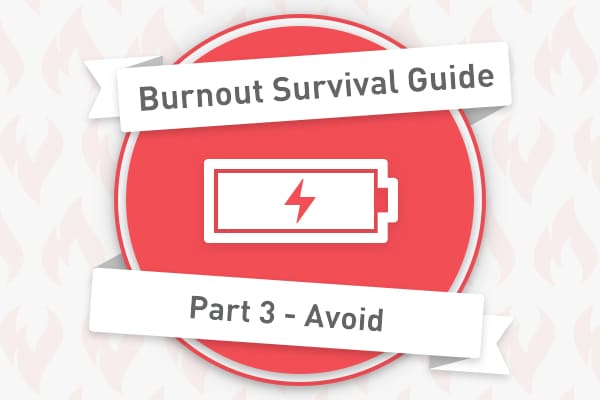In the first two posts of this series, we learned how to identify signs of burnout and how to recover from burnout once we are already experiencing it. This post will focus on proactive steps to take to avoid burnout altogether.
1. Schedule Rest Time Every Week
Everyone needs time to rest. However, some of us are better at rest than others. If you’re someone who is chronically busy, I highly recommend scheduling time to rest each week. Block it off in your calendar.
Do not ignore the blocks. Respect them as if they are any of your other calendar events.
I have an event in my calendar every Tuesday evening that says:
🌴 Rest Day. Do not schedule anything! 🌴
Is it silly? Absolutely. But it helps hold me accountable to rest. You might find that you need to do this for more than one day each week. Do what you need to ensure you give yourself the appropriate “me time” you need and deserve.
2. Use Your Vacation Time
Rest days throughout your week are great, but smashing a few of those together into a vacation will also do wonders for you. If you are fortunate enough to have vacation time at your disposal, use it.
I recommend planning your vacation time at the start of the year. Don’t wait until the end of the year to use it all. Aim to use some time each quarter, if possible. This way you’re giving yourself sufficient time to recharge throughout the year.
Additionally, try not to jam-pack your vacations with too many activities. “Vacation” doesn’t need to be anything more than a few days of camping. Sure, you can plan something more elaborate, but don’t pack so many events in that you end up feeling like you need a vacation to recharge from your vacation before you can get back to your “normal” routine.
3. Set Boundaries
Setting boundaries can be hard, especially if you’re a people pleaser or someone who has a difficult time saying “no.” I challenge you to embrace “no.”
I’m not recommending you blow off a friend in need or never give your time to a charitable cause. However, you don’t need to say “yes” to every single request that is thrown at you.
Before you immediately say “yes” to a favor, ask yourself if this is something you will feel excited about doing. If the answer is “no,” don’t be afraid to say it. A simple “I’m sorry, I won’t be able to help you with that” is sufficient. If you know someone else who might be genuinely interested in helping, see if they’d like to take on the task.
4. Learn to Ask for Help
You can’t do all the things all the time. Sometimes, we take on too much and simply need a little help. Don’t be afraid to ask for it when you need it.
In your personal life, “help” might be as simple as asking your partner to make dinner so you have a few hours to take care of another task. In your professional life, “help” might mean asking your teammates to take a few tasks off your plate or to share the pain a little.
As hard as it can be to ask for help, doing so is worth it. Most people will be eager to alleviate some pain, and they might even learn that they really enjoy the chore they helped you with, leading to a more long-term shift in task distribution.
5. Keep a Gratitude Journal
You might recall from the first post in this series that a few of my telltale signs of burnout are feelings of irritability and entrapment. I’ve found that routinely taking time to reflect on what is going well in my life — who and what I’m grateful for — does wonders for keeping my mindset positive.
I don’t have a fancy or trendy practice for this. I simply have a notes document called “Wins & Gratitude” that I try to add to at least once each week.
The “wins” section of the document contains a list of accomplishments I am proud of. Sometimes they are anecdotes that I write out. Sometimes they are screenshots or photos of kind works I was sent from a friend or coworker.
The “gratitude” section of the document contains a list of people, places, memories, and things I am grateful for: A fresh cup of espresso, being fortunate enough to travel to places that inspire me, that my partner helps me maintain my motorcycles, etc. The items may be minuscule or monumental.
This practice might sound a little silly, but I encourage you to give it a try. It takes such minimal effort and truly does help reframe your perspective to be more positive.
Continue to Be Proactive
It can be easy to let these practices slide and find yourself all the way back in a state of burnout, seeking recovery. Don’t beat yourself up if you take a step backward. However, I encourage you to try your best to be proactive about addressing any imbalances in your life with the above methods. They will help you recalibrate along the way and avoid entering a state of full-on burnout.

